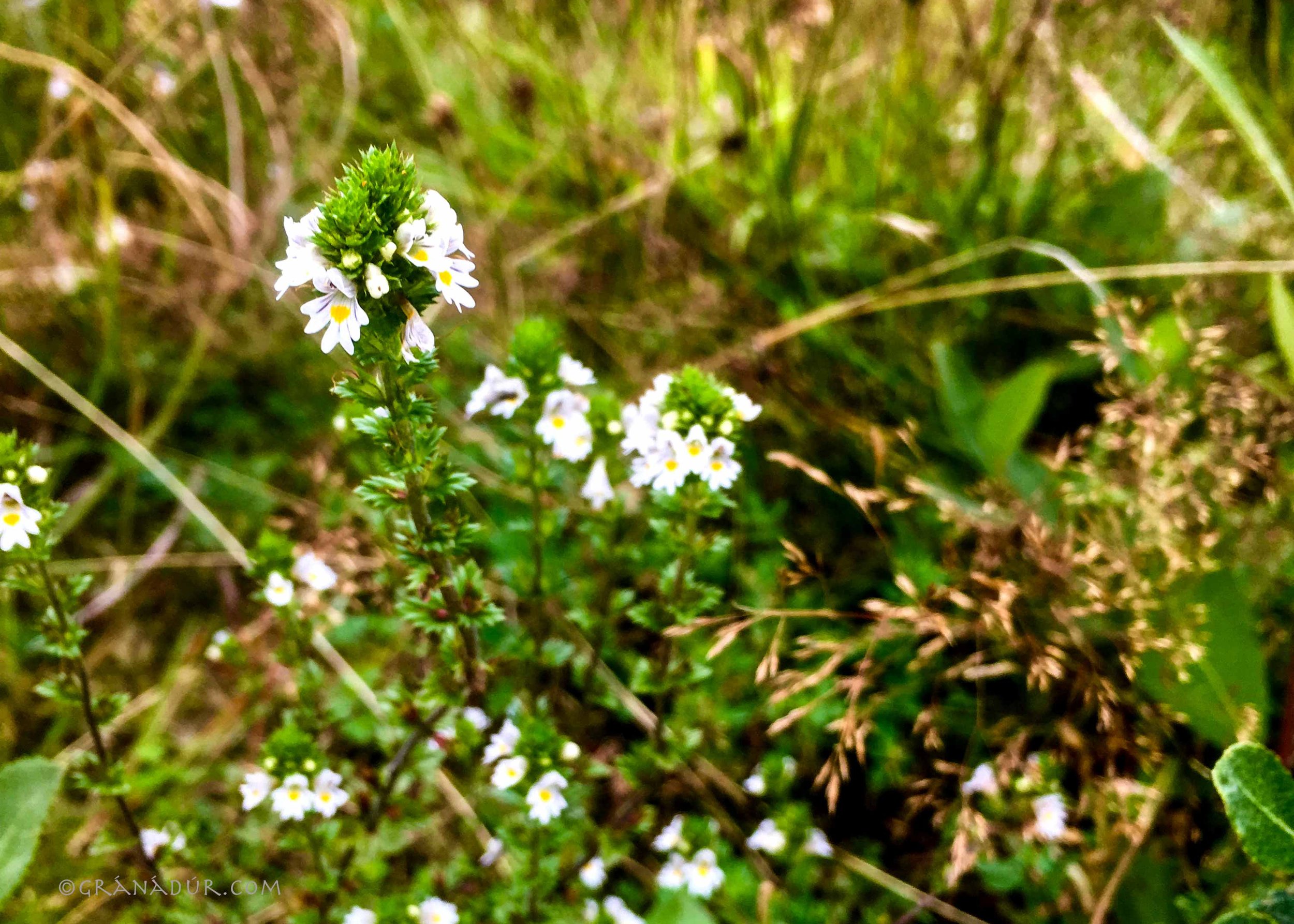Eyebright
Common names
Eyebright, Red Eyebright, Euphrasy
Latin name
Euphrasia officinalis (collective of species including E. rostkoviana, brevipila, stricta)
Family
Scrophulariaceae
Parts used
Aerial parts, herb
Botanical description, cultivation and harvesting
A small downy annual saprophytic plant. It has a square stem up to 30 cm tall. The leaves are opposite and ovate. The two lipped flowers are red, purple or white and grow in axillary spikes. It is native to Europe, Western Asia and naturalized in the USA. Grows in meadows, pasture and grassy areas, including by seashores. It is difficult to cultivate since it is saprophytic to grasses but seed is available and some have succeeded in growing it from seed. It is harvested during the flowering period, usually May-October.
History, folklore, taste and energetics
Astringent. The flowers are thought to resemble a healthy eye, according to the Doctrine of Signatures. Reputed by some to encourage clear sightedness on all levels and to give the ability to see fairies. The botanical name is derived from the Greek word euphrosyne, meaning gladness.
Constituents
Glycosides (aucubin), Saponins,Flavonoids, Lignans, Phenolic acids Tannins, Resin, Volatile oils
Actions
Anti-catarrhal
Astringent
Anti-inflammatory
Anti-bacterial
Antispasmodic
Eyebright and foliage on Hollyfort Hill in Wexford
Traditional and current uses
Eye lotion
Nasal catarrh, rhinitis, sinusitis, ear problems, conjunctivitis, hay fever, colds, measles
Mouth wash for throat and mouth inflammation
Tones the mucus membranes
A bitter liver tonic
Dries up fluid mucus, not suitable for dry congestion

